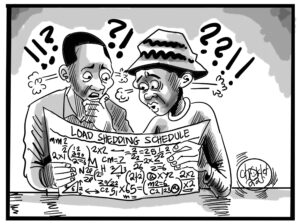In my last week’s feature of the Monday opinion, I highlighted general trends of resilience in the agricultural sector, particularly at a micro-scale. An argument was made that this trend shows more could be achieved with the sector particularly that the Government of the Republic of Zambia identified agriculture as a key priority sector in not only poverty reduction and economic diversification but also in driving pandemic recovery. Indeed, throughout the COVID-19 pandemic period, agriculture has been a source of own food source for most Zambians, with food commodity spikes in prices forcing trade exchanges with locally produced foods. How then can the country harness this resilience potential in the agriculture sector?
This week’s feature asks how this potential resilience can be harnessed for sustainable agriculture development and growth. Addressing this question requires that we explore and understand the centrality of state actions at every stage of historical development. Successive regimes post-2002 have somewhat emphasised agricultural diversification as a pathway to employment creation. There has been a specific focus on the promotion of agribusiness investments across various value chains. This includes a trend in the acquisition of existing companies as well as resource, market, and efficiency‐seeking practices among foreign companies. Our recent research shows there has been significant agro‐investments in primary production and output markets including transport and storage. Combined, these elements have induced growth in export commodities such as wheat and soybeans. Specific supportive elements include promotion of high‐value crops and related value addition, irrigation infrastructure and expansion and general investor‐friendly policies. Agriculture continues to place at its centre empowerment and poverty reduction, rural development, job creation, and food security. Our research further reveals: (1) diversification by existing, and entry of new companies into agriculture; (2) increased demand for land, water and electricity; (3) increased tax receipts; (4) growth in soy and other food crops shaped by wider private‐enterprise growth; and (5) growth in agro‐processing.
Despite these commendable efforts, more needs to be done to create a stable agricultural environment capable of delivering pandemic recovery. On 26th July 2021, the Times of Zambia carried a front-page article entitled ‘Stock-feed prices frozen: Government suspends increases in prices of day-old chicks, animal feed to consider concerns from farmers.’ There were further reports through the Zambia National Broadcasting Corporation that the Government had suspended issuance of export permits for stock feed, ingredients, and day-old chicks. Government pricing policy manoeuvres in agriculture has been subject to much debate throughout the past decades. Such pricing policy may influence agricultural incentives and alter production and investment decisions – the so-called price distortions. Distortions because they distort the market price. Distortions can stem from different angles. They can be domestic measures such as output taxes and input subsidies. They can also be trade measures such as import tariffs and export taxes. Distortions may also arise because of multiple exchange rate systems.
I am not sure how effective such interventions are in addressing structural problems facing poor countries like Zambia. This is so given that it is the domestic price that generally shows the influence of agricultural policy in the countries whose governments intervene in the agricultural markets. However, short term reactions to prevailing market dynamics only conceal essential elements and problems facing agriculture in Zambia and take away efforts that can build agriculture systems and resilience. These actions lack strategic planning underpinned by a long-term outlook that could help to unlock and harness the sector’s potential. They limit the potential of trade exchanges for food provision and the extent to which agriculture could be relied upon as a source of growth and thus effective forms of pandemic recovery.
What then, if anything, can we reasonably learn from this, and what if anything, might it contribute to? I believe that recognising structural challenges facing the sector and building long-term policy thinking and action is essential in driving sectoral growth and resilience. This requires bold actions to let go of those elements that have contributed to holding down the sector’s potential. Regional experiences from Tanzania’s rice sub-sector show that with steady political will, this is possible – gradually, cautiously, and prudently. This means it is not always that the government should react and intervene in the agricultural sector. Sometimes no intervention can be intervention enough.
About the Author: Dr Simon Manda is a Senior Researcher at the Centre for Trade Policy and Development anda Lecturer at the University of Zambia Department of Development Studies. He is also a Visiting Research Fellow at Oregon State University, USA.




















One Response
I’m dipply concerned about the behaviour of the ecz who can’t do something on the of caught in possession of prarked ballot and government why shutting down media’s you won’t control this if people get hungry